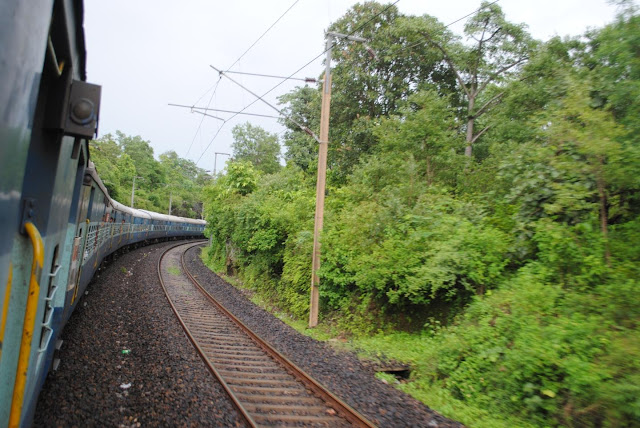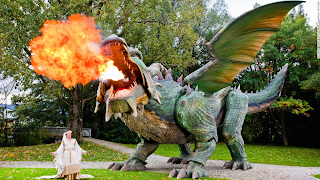Chhattisgarh (Hindi: छत्तीसगढ़ Chattīsgaṛh is a state in Central India. The state was formed on
1 November 2000 by partitioning 16 Chhattisgarhi-speaking south-eastern districts of Madhya Pradesh.
A state rich in steel, coal, electricity production and forest wealth.
 |
| Location of Chhattisgarh in India |
India's first 5.6-ft broad gauge (BG) engine (the standard in India now) commissioned on 18 February 1853 by Great India Peninsular Railway (GIPR). On 16 April, the country's first passenger train was flagged off from Boribunder in Bombay.
 |
| ©Anjani Kumar Tripathi/Indian Railways |
Trains have always given a flight to the human imaginations.
The GIPR is mentioned in Jules Verne's '
Around the world in eighty days'. In 1872, protagonist Phileas Fogg and his French servant Passepartout went on a trip around the world. India was connected from
Bombay to
Calcutta via the GIPR with a break in between. Yet, the journey was finished in three days. Vernes mentions that the 80-mile (128 km) rail journey from
Allahabad to
Benares was covered in two hours - an average of 64 kmph. Well, some of our fastest trains today average only about 65 to 70 kmph.
 |
| ©Anjani Kumar Tripathi/Indian Railways |
Poets have found trains irresistible. Steam's mucky glamour may only
exist now between the covers of The Railway Children, but the romance of
the railway lives on. Certainly, there's something compelling about the environment to which the train exposes you - it's the train's ability to suspend you between here and there - outside
regimented time, away from the quotidian - that attracts. There's
something regenerative in the act of boarding a train in one place and
disembarking in another, without having actively engaged in the process
at any juncture; it transports, in both senses of the word (Sarah Crown/theguardian.com).
The train is running on the track, track, track
And I’m sitting in the carriage at the back, back, back
For we’re going on a journey that is fast, fast, fast
The fields and the cows whizz past, past, past
We’re going to the seaside very quick, quick, quick
And I’m listening to the wheels as they click, click, click
And we’re going over the hills to the top, top top
But slowly, very slowly, we come to a station and we stop, stop, stop..sssshhhhhhh
(by Brenda Williams)
And gradually came the station Boridand, where train entered the much awaited borders of the state, greeting passengers with a sudden change of air with mist, crystal blue sky,
thick Sal forest trees beside the rail track,
and people moving alongside....busy in their daily scores..!!
 |
| ©Anjani Kumar Tripathi/Indian Railways |
 |
| ©Anjani Kumar Tripathi/Indian Railways |
 |
| ©Anjani Kumar Tripathi/Indian Railways |
 |
| ©Anjani Kumar Tripathi/Indian Railways |
 |
| ©Anjani Kumar Tripathi/Indian Railways |
 |
| ©Anjani Kumar Tripathi/Indian Railways |
 |
| ©Anjani Kumar Tripathi/Indian Railways |
 |
| ©Anjani Kumar Tripathi/Indian Railways |
 |
| ©Anjani Kumar Tripathi/Indian Railways |
 |
| ©Anjani Kumar Tripathi/Indian Railways |
 |
| ©Anjani Kumar Tripathi/Indian Railways |
 |
| Augustine of Hippo, also known as St. Augustine |
“The world is a book and those who do not travel read only one page.”
―
Augustine of Hippo























